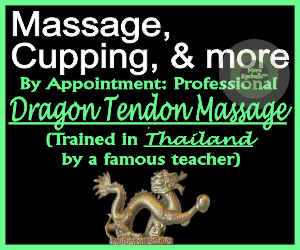
By Mitsie VargasLedger correspondent
Massage therapy has proven that it can improve circulation in affected areas, increase the massaged area's body temperature, relieve muscle spasms and stimulate the sympathetic nervous system. It can also eliminate toxins by stimulating the lymphatics. Because dogs lack the sweat glands we have, it is important to move the fluids in the skin and promote the excretion of toxins and massage therapy can excel at that.
Through massage, we can also reset abnormally positioned anatomical structures such as swollen muscles and ligaments. This is not chiropractics since we do not move the bones, but can achieve similar results with a milder approach. It is also used to effectively diagnose muscle tears and localize pain. Canine athletes and working dogs are at constant risk of muscle tears, cramps, and arthritis and as such are one of the main beneficiaries of massage therapy. It is not strange to see certified canine massage specialists working in all major agility and field trial competitions across the country.
Another big area where this therapy shines is the psychological benefits for puppies, rescued dogs and any anxiety-ridden dog exhibiting behavioral problems. Through tender and firm touch these dogs relax, learn to trust and actually demonstrate physiological changes with the release of dopamine, which makes them feel good and improves normal brain functioning. It also releases serotonin, which promotes a good mood and helps those anxious pets calm down. Another chemical that is released is oxytocin and that is the "happy" hormone. Of course, the techniques must vary from those used on people because dogs do not like pain and in some cases — kneading a tense muscle or traumatized tendon — they won't understand that in order to get their relief they must go through the pain first. Therefore, a properly trained therapist is needed to utilize this modality to its full healing potential.
Progressive practices are employing certified canine massage therapists who help rehabilitate acupuncture and surgical patients and some integrative medicine veterinarians are also being trained in different manipulation techniques. I am a certified Tui-na practitioner, which is a branch of Traditional Chinese Veterinary Medicine (TCVM) known as manual therapy for prevention and treatment of disease. Tui means push and na means pull or lift. These techniques date to the Yin-Shang period about 1600 B.C. In the world of TCVM, the whole body effects of massage involve the regulation of Yin, Yang, Qi ( energy) and blood.
Through massaging an area you can unblock a meridian (a path where energy travels through the body) and can also balance the internal organs. The local side effects of a massage in holistic medicine is to invigorate the blood, remove the stagnation of blood and energy, and eliminate energetic blockages (aka pain).
In my book, "Alt-Vet: The Revolutionary Pet Care and Longevity Solution," I go in detail about the benefits of Tui-Na and present the top 10 techniques that pet owners can easily do at home to help their pets relax and feel better. Canine massage therapy is an integral part of holistic veterinary medicine.
— Dr. Mitsie Vargas is at Orchid Springs Animal Hospital in Winter Haven. She can be reached at drv@osahvets.com.
Let's block ads! (Why?)




































































































